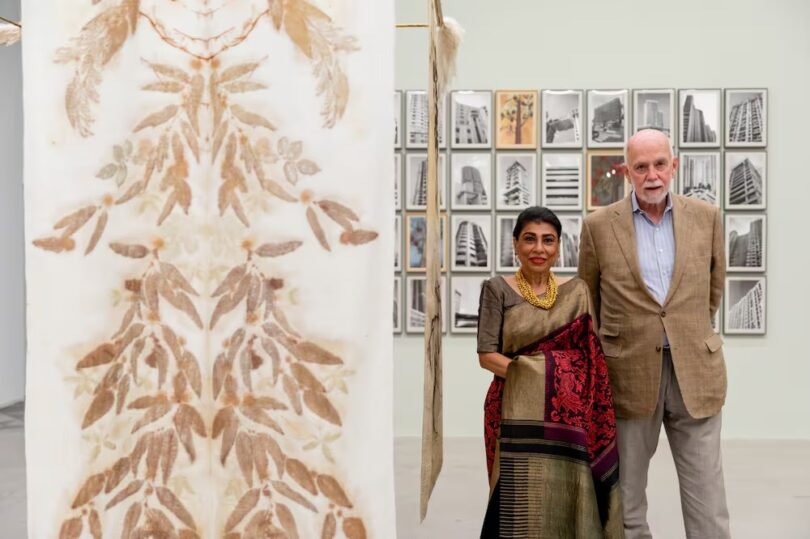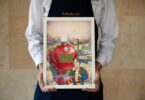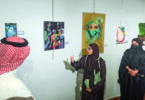Razmig Bedirian
The opening of Ishara Art Foundation at Alserkal Avenue in March 2019 was a significant stride for local representation of contemporary South Asian artists. While there were other spaces that presented works by artists from that region and its diaspora, there wasn’t a dedicated institution that incorporated a South Asian focus into its core mission.
“I felt there was a lack of space that focused on these nations,” says Smita Prabhakar, the foundation’s founder. It was surprising, given that India, Pakistan, Bangladesh and Sri Lanka have had a long-standing relationship with the Gulf, going back to when fishing and pearl diving were the pillars of the regional economy.

Ishara was founded to fill that gap. The non-profit included Abdelmonem Alserkal as an honorary chairman of the board of trustees, as well as key cultural figures from the local scene, such as Myrna Ayad, Hoda Barakat, Mustafa Hashemi, Abdul Hamid Juma, Colm Mcloughlin, Samer Saifi, Rajan Sehgal, and Abdul Fattah Sharaf. The team was also bolstered by an advisory board that included Richard Armstrong, former director of the Solomon R Guggenheim Museum, as well as curators Maya Allison, Sandhini Poddar, and artists Bharti Kher and Chittrovanu Mazumdar.
To have a space in Dubai that showed the dynamic artistic landscape of South Asia was pivotal, Prabhakar says. But there was another angle that inspired the entrepreneur, who is also the director of the AMS International Group, to launch Ishara.
As political tensions and rifts splintered relationships between several South Asian countries, the Gulf – specifically the UAE – had the potential to provide a space to explore artistic links in that region, an endeavour that would be much harder to do back home.
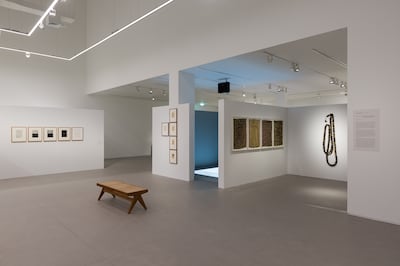
“Because of the political issues that are in play [in South Asia], a lot of people are not able to show in other countries. They can only show in their own countries,” Prabhakar says. She adds that she finds the fact tragic, especially considering how intertwined the histories of the different countries are.
“It’s very, very sad that people, that artists, are not able to meet each other,” she says. “And the public in these countries is not able to see what their counterparts [in neighbouring countries] are doing.”
“There is actually tragedy in that,” she says. “It’s a subcontinent. We were all one people. Unless you hear the name, you couldn’t even tell which country we were from.”
The inaugural exhibition at Ishara tried to reflect on some of these issues, from displacement and the shifting concept of identity to the migrant experience in the Gulf.
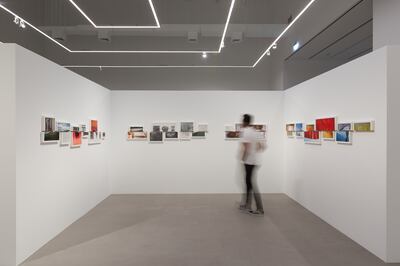
Altered Inheritances: Home is a Foreign Place, opened in March 2019 and ran until July of that year. The exhibition put the works of artists Shilpa Gupta and Zarina in an intergenerational conversation. The use of texts and visual metaphor were an overlap between their disparate practices. While Zarina’s works drew from her own journeys, Gupta’s art materialised from the travels of others.
In Altered Inheritances – 100 (Last Name) Stories, for instance, Gupta highlighted the stories of 100 individuals who chose to forgo their last names, either because it put their lives at risk or simply because it facilitated their professional success. Zarina’s Home/Ghar, on the other hand, presents the layout of the artist’s childhood home in Aligarh, a city in India’s Uttar Pradesh. Her print Faasla/Distance, meanwhile, lists the miles that spanned her past in Aligarh with her life in New York’s Manhattan.
“When I went to first meet Zarina in New York, she [lived] in a neighborhood that was very Asian, there was a kebab shop, a tandoori chicken shop, things like that,” Prabhakar says. “I went up to her room to her apartment, which was also her studio. And she had a very simple bed. The bed was actually very reminiscent of her. We have in India these beds that are made of wood, which are called takhet. All her works were under this takhet.”
Prabhakar had got the artist a box of dates from Dubai and when it was time to part ways, Zarina insisted on presenting her with an artwork. The meeting, which took place some time in 2017, left an impact on Prabhakar, and alongside the nature of Zarina’s artwork, Prabhakar says she thought back to that moment as plans to open Ishara materialised.
She had already amassed an impressive collection of Zarina’s works, but the foundation still needed another artist to feature in its inaugural exhibition. Prabhakar had also known Gupta for some time, and to her, their works naturally resonated with each other. She says she was touched by the “trust that Shilpa placed in me”.
While Gupta was able to attend the opening, Zarina unfortunately was not. It was especially a shame given that Zarina’s work was pivotal to the foundation’s visual identity. Its logo, after all, which combines a circle and a square, is rooted in an ideogram by the artist that alludes to the word “aasman”, or sky, derivatives of which can be found in Arabic, Hindi, Persian, Swahili and Urdu.
“It was my deepest regret that Zarina was not able to come,” Prabhakar says. “She was not well.” Zarina, who was in her early 80s at the time, was seeking medical treatment. The artist died in August 2020.
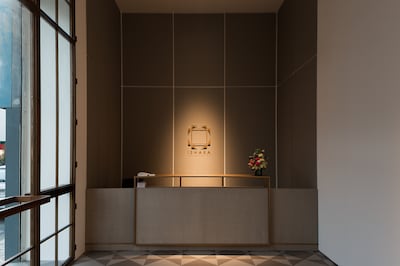
Over the past five years, Ishara Art Foundation has organised several moving and memorable exhibitions that have been distinctive offerings in the local arts scene. Prabhakar says she is immensely proud of the team, headed by curator Sabih Ahmed, and the effect they have had on the foundation and its vision.
“The fact that they’ve been able to achieve world-class shows on a limited budget, because we are completely self-funded, is amazing,” she says. “The fact that Ishara is so well thought of, and that I am able to be its chairperson. What more can I ask?”
The foundation itself owns no works, and while its exhibitions may occasionally draw from Prabhakar’s collection of contemporary South Asian works, she emphasises that her personal considerations have little to do with the team’s daily efforts.
“We don’t buy or sell, I don’t want to go there,” she says. Even when it comes to her own personal collection, Prabhakar says it remains distinct from the mission and focus of the foundation.
One of the things the entrepreneur, however, is proud of contributing, is helping to establish a space that is modular.
“The lighting is world class,” she says. “We spent a fortune on lighting, and I don’t regret it for one minute.”
The space’s flexibility, lighting and ability to adapt to the nature of each show is evident to anyone who has visited the space for more than one exhibition. The foundation puts on an average of two shows every year, and dramatically adapts to reflect upon the themes and content of each exhibition.
The foundation is currently showing Sheher, Prakriti, Devi – a group exhibition that brings together works by Chamba Rumal, Chiara Camoni, Gauri Gill, Ladhki Devi, Mariam Suhail, Meera Mukherjee, Mrinalini Mukherjee, Rashmi Kaleka, Shefalee Jain, Sukanya Ghosh, Vinnie Gill and Yoshiko Crow.
Courtesy: thenationalnews

